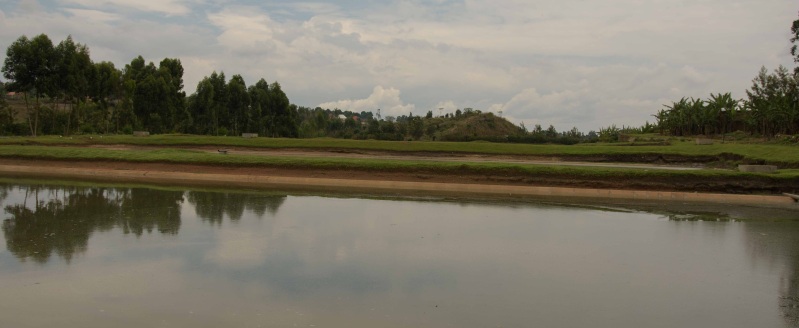18 April, 2024
An important aim of the SARA project is to compare the occurrence of antibiotic resistant bacteria and antibiotic resistance genes in Europe and Africa, and to assess the impact of climatic conditions.
Exemplary results for E. coli as a general faecal indicator and extended spectrum beta-lactamase (ESBL) producing E. coli as an indicator of antibiotic resistant bacteria show a high percentage of resistant E. coli for Uganda. This abundance is 2-20 times higher than for the European model sites.
The reduction by wastewater treatment was examined. In Mbarara (Uganda), treatment is based on a pond system. This treatment resulted in a low reduction in indicator bacteria and ESBL E. coli (2.5-2.3 log levels). In Germany, a reduction of 4.4 to 4.6 log levels was measured for the advanced wastewater treatment (mechanical purification, two step biological purification and activated carbon treatment). Furthermore, the antibiotic resistance genes sul1, blaTEM, and tetC were reduced by 2.2, 1.9, and 2.7 log levels, respectively, in the German treatment plant, whereas no decrease of these antibiotic resistance genes after wastewater treatment was observed in Uganda.
The relative abundance of antibiotic resistance genes based on the normalisation with 16S rDNA is high in Uganda as compared to Europe. The presence of the beta-lactamase genes blaCMY-2 (100 % of samples positive) and blaOXA-48 (40 % of samples positive) demonstrates the wide distribution of extended spectrum beta-lactamases in Mbarara. The presence of the mcr-1 gene in 20 % of wastewater samples (albeit in very low concentration) is of concern, as it confers resistance to the last-resort antibiotic colistin.
In conclusion, application of harmonised methods for the detection of the selected key antibiotic resistance genes and ESBL E. coli as an antibiotic resistant indicator bacterium provides the basis for the comparison of surveillance data. Results demonstrate that effluents from wastewater treatment plants are an important source of antimicrobial resistance in the aquatic environment. Currently, assembly-based next generation sequencing approaches are used to associate antibiotic resistance genes to their associated bacteria and plasmids.
Picture: Wastewater stabilisation ponds in Mbarara, Uganda. @Arthur Leon
